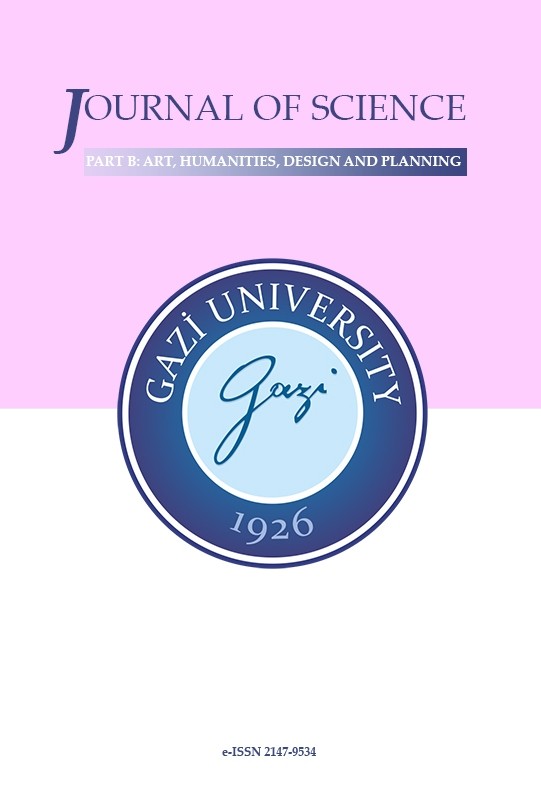A Study On Utilization Of Tecniques Of Interactıve Animation In The Architectural Basic Design Education
A Study On Utilization Of Tecniques Of Interactıve Animation In The Architectural Basic Design Education
Architectural design education, Computer aided design, interactive animation VRML, Virtual reality glasses,
___
- REFERENCES [1] B. Denel, Basıc Desıgn and Creatıvıty, ODTÜ Faculty of Architecture Press, Ankara, 1981. [2] J. Itten, Desıgn and Form, The Basic Course at the Bauhaus, London, Hudson, 1967. [3] T. Yıldırım, A. Yavuz, N. İnan, “Comparison of Traditional and Digital Visualization Technologies in Architectural Design Education”, International Journal of Informatıcs Technologies, 3(3), 18-19, 2010. [4] T. Yıldırım, A. Yavuz, N. İnan, “Effects and Utilization of Information Technologies in Architectural Design Education”, researchgate.net, 2015. [5] D. Atılgan, Effects of Developing Design Tools and Technologies on Architectural Design Products, PHD Dissertation, Dokuz Eylül University, İzmir, 2006. [6] R. Oxman, The thinking eye: visual re-cognition in design emergence, Design Studies, 23 (2), 135-164, 2002. [7] S. Lertsithichai,“Tangible modeling interface: Towards a new paradigm in computer- aided architectural design” (Unpublished Phd Thesis), Harvard University, Massachusetts, 2002. [8] G. Ateş, “The Use Of Simulation İn Visual Effect Analysis”, Master Thesis, Yıldız Technical University, İstanbul, 1999. [9] O. Şahinler, Artistic Perspective, Istanbul State Academy of Fine Arts, Edition Number: 87, 134, İstanbul, 1982. [10] G. Çağdaş, “Computer in Architecture Education”, Computer Seminar in Architecture, Yıldız Technical University, 9 Şubat-14 Mart 1993, 9-18, İstanbul, 1993. [11] Ç. Türkyılmaz, “An Examınatıon On Transformatıon Of Knowledge In The Early Desıgn Phase In Archıtectural Educatıon And A Model Proposal”, PHD Dissertation, Yıldız Technical University, İstanbul, 2010. [12] R. Rogers, “The Future Has Just Begins”, (Translation) S. Soygeniş, Architectural Journal, 246:55-57, 1992. [13] D. Bertol, “Designing Digital Space: An Architect’s Guide to Virtual Reality”, John Wiley & Sons, pp. 23-39, New York, 1996.
- Yayın Aralığı: Yılda 4 Sayı
- Başlangıç: 2013
- Yayıncı: Gazi Üniversitesi
DESIGN AWARDS AS A DESIGN PROMOTION ACTIVITY: INTERNATIONAL DESIGN AWARDS
Damla ŞAHİN, Alper Çalgüner, H. Güçlü Yavuzcan
Makbule Özdemir, M.tayfun YILDIRIM
DESIGN AS A CONVERSATION WITH LINES: ‘SKETCHING AND FREE-HAND’ COURSE EXPERIENCES
Sema Mumcu, Doruk Görkem Özkan
FROM EVOLUTION IOT TO REVOLUTION OF DESIGN PROFESSION
EVALUATING THE ORGANIZATION OF URBAN ENVIRONMENTS THROUGH VIRTUAL MEDIA: THE EXAMPLE OF VIDEO GAMES
